Interproximal Cavities: The Inside Story
August 30th, 2023

Time to brush! So, you make sure you gently brush the plaque off the outside surfaces of your teeth. You want to present a gleaming smile to the world, after all. And you make sure to brush the inside surfaces as well, because who wants to feel a fuzzy patch of plaque every time their tongue hits their teeth? And, naturally, you remember to clean the tops of your molars, because those crevices make them more cavity-prone than any other surface.
Done? Not quite!
You might be surprised to learn that no matter how well you’ve brushed all the visible surfaces of your teeth, you’ve left quite a bit of enamel untouched—the adjoining, or touching, surfaces of the teeth which sit next to each other.
You’ve probably noticed that your bristles can’t . . . quite . . . reach all the enamel between your teeth (especially between your molars!) when you’re brushing. This means that food particles and plaque have an easier time sticking around. And when the bacteria in plaque are left undisturbed, especially with a banquet of food particles available, they produce acids which gradually eat away at the enamel covering our teeth, creating a cavity.
Here’s where we work in some specific dental vocabulary. “Interproximal” means between the adjoining, or touching, surfaces of the teeth. And an interproximal cavity is a cavity which develops on one of those side surfaces of your teeth.
- Discovering Interproximal Cavities
Clearly, a cavity between the teeth won’t be as obvious as other cavities. How will you know if a dental appointment is in order?
There are typical symptoms which can show up when you have a cavity. Chewing might be painful. You might feel pain or sensitivity when you eat or drink something which is hot, or cold, or sweet. But pain and/or sensitivity aren’t always present, especially when a cavity is just beginning to develop.
Regular exams are important so you can catch small cavities before they become more serious. That’s why, at your regular dental exams, Dr. David Shipper and Dr. Howard Vogel will always check for any signs of decay on every surface of each tooth, including those places which aren’t easily visible. And that’s why X-rays can be an important tool for locating these tricky cavities.
- Treating Interproximal Cavities
If Dr. David Shipper and Dr. Howard Vogel and our team finds a cavity between your teeth, there are different treatment options available depending on the size of the cavity:
- A typical cavity will require a filling. The decay will be removed, and then the area will be cleaned and filled. You’ll probably choose a filling material which can be matched to your enamel color if the restoration will be noticeable.
- If decay has spread to the pulp chamber inside the tooth, a root canal is often the best treatment option, with a crown applied afterward to protect the tooth.
- A tooth so decayed or infected that it cannot be saved might require extraction.
Dealing with any weakness in a tooth as quickly as possible is always better than waiting until a more complicated treatment option is needed. Of course, the best treatment is prevention, and, luckily for us, it’s not a complicated process at all.
- Preventing Interproximal Cavities
In fact, it’s about as basic as it can be—brush and floss effectively. We recommend brushing for two minutes at least twice a day and flossing once each day. While most of us are good about keeping up with brushing, sometimes that daily flossing is more a goal than a reality.
But it’s flossing which really does the trick when it comes to interproximal cleaning. If you floss correctly, food particles and plaque are removed from between the teeth and around the gumline—places where bristles just can’t reach. The next time you get your teeth cleaned at our New York, NY office, ask for tips on how to perfect your technique. And, if you have difficulty flossing, ask about alternatives such as water flossers and interproximal brushes.
Preventing cavities on the exterior surfaces of your teeth is probably pretty much automatic by now, but don’t forget the potential for stealth decay! If Dr. David Shipper and Dr. Howard Vogel and our team find signs of erosion on the sides of your teeth, or if your hygienist lets you know that you’ve got a lot of interproximal plaque buildup, work with us to make sure “interproximal cavity” doesn’t become a working part of your dental vocabulary.





 Website Powered by Sesame 24-7™
Website Powered by Sesame 24-7™